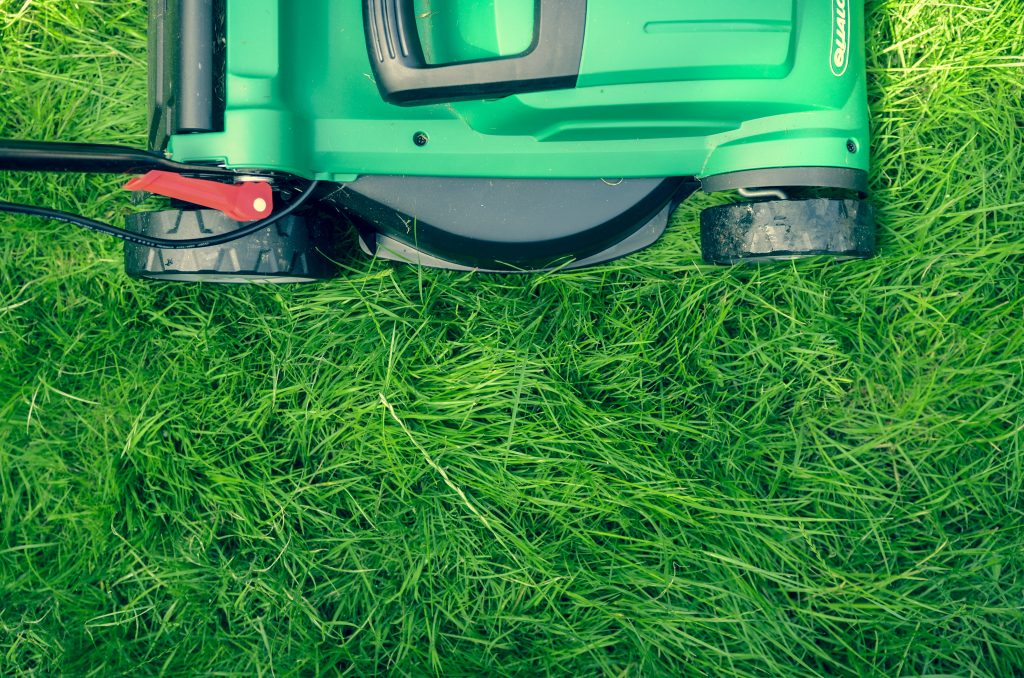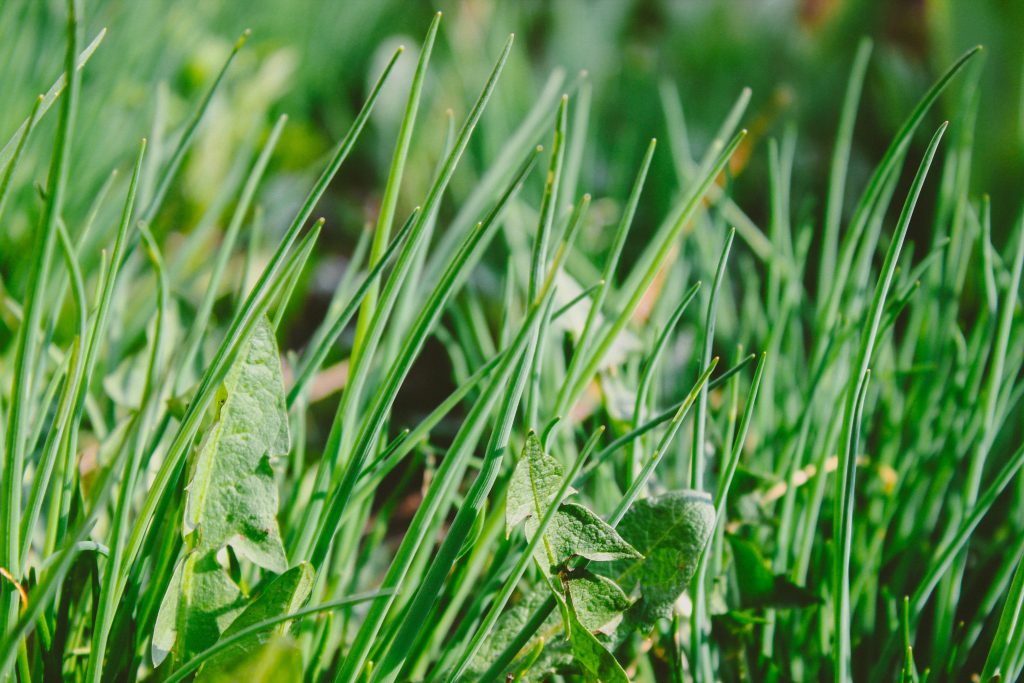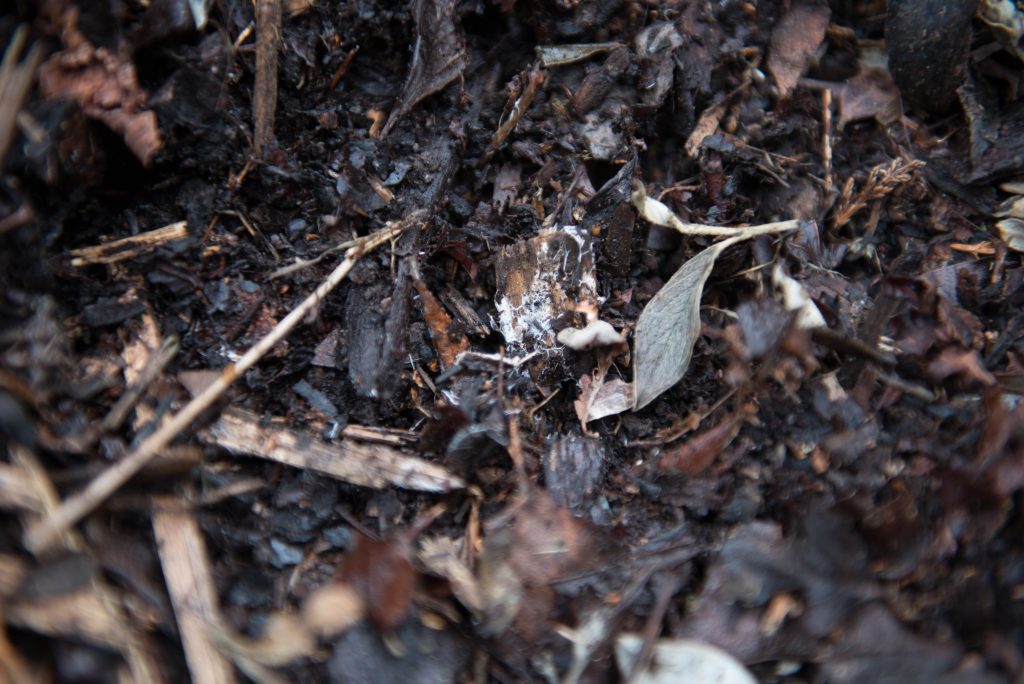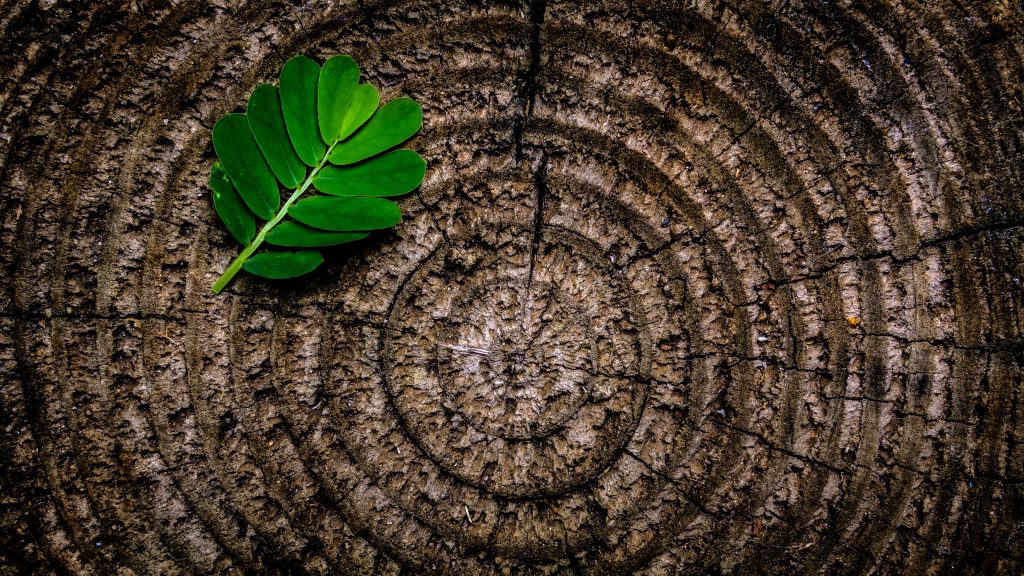‘Eco-heaps’ revisited
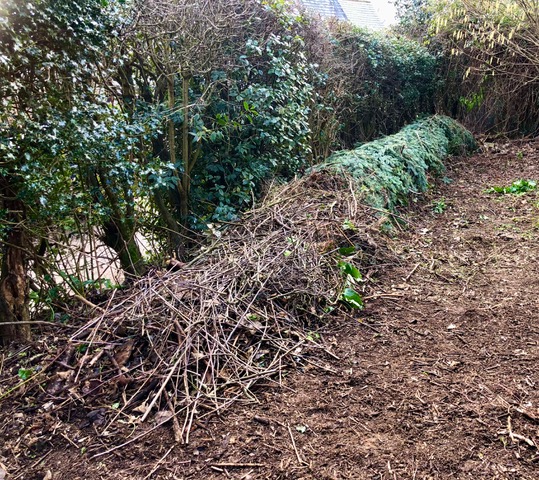
“The ground’s generosity takes in our compost and grows beauty, try to be more like the ground” – Rumi
In July 2020, I wrote about the processing of garden ‘rubbish’, introducing the idea of creating an ‘eco-heap’ in a corner of the garden where woody waste could be left to rot undisturbed, a process both labour-saving and ecological. In the last weeks, I have been working in a large eco-heap in one of my gardens and thought it would be interesting to revisit this idea.
I was prompted to address this corner for two reasons: firstly, it was overflowing with green waste of all kinds, and secondly, it looked very un-beautiful. What was going on?
The garden in question was the estate of Nutley Hall, a residential community for adults with special needs, and whilst I try, as one of the gardeners there, to keep the green waste processes in order, with a community of around 60 people it is sometimes an uphill struggle. The first thing I realised was that because it looked like a ‘rubbish dump’ it had been treated like one: all sorts of green waste – grass clippings, weeds, large logs and wooden crates had been deposited – none of which were supposed to be there. A ‘vicious circle’ had developed: where the more waste that was deposited, the more the heap looked untidy, which consequently attracted more waste!
Realising that I needed to take matters in hand by re-organising the heap, I made three further discoveries: the first was that in amongst the heap, there was a reasonable quantity of perfectly good firewood (put there by myself!), the second was that a lot of the smaller wood had rotted to a beautiful mulch, and the third was that it had taken around 5 years to reach this state. Resolving to salvage the firewood and the mulch, I spent a good many hours sorting through the heap, until most had been removed and I could start rebuilding a new one on the existing site.
This time I have made it beautiful (in my eyes at least) from the outset, adopting the ‘dead hedge’ system widely used in the estate of Emerson College in Forest Row. This system utilises small pieces of woody material (up to 1cm in diameter), placed in an ordered way so that a low ‘hedge’ 50-75cm high is built. Once they reach the required height, no more material is added indicating that the area is ‘closed’. The positioning of the hedge is either along a live hedge line or a place where a visual barrier is required; these garden features are to my mind both beautiful and effective and are well worth a visit to Emerson College to see them.
So to recap what I’ve learned about an eco-heap:
- Position it somewhere where it can be left undisturbed for a long time (at least 4-5 years)
- Once built, don’t keep adding new waste
- Only put small woody material in the heap (up to 1cm in diameter)
- Make it as beautiful as possible – it is not a ‘rubbish dump’. (It could be a hedge, a pyramid, a dome…)
- Plan to use the compost once full rotting has taken place (some sieving may be required)
A final thought – one of the reasons that eco-heaps are ‘ecological’ is that they provide a home to insects and small mammals (particularly hedgehogs and mice). It is worth bearing this in mind when one reaches the point of using the compost: tread carefully and if one becomes aware that a little home is being disturbed, wait some time to allow any young to mature. The disturbance will probably prompt the animals to move to another location, so maybe have the new eco-heap near the old one to encourage a seamless move!


